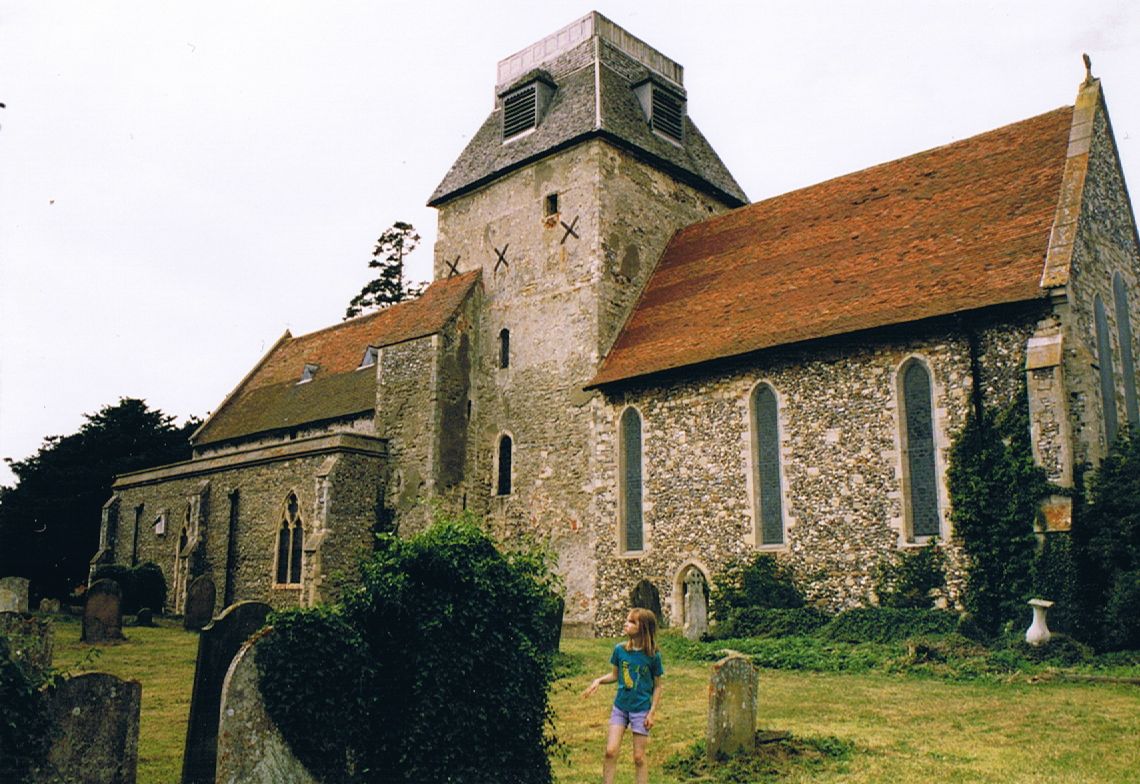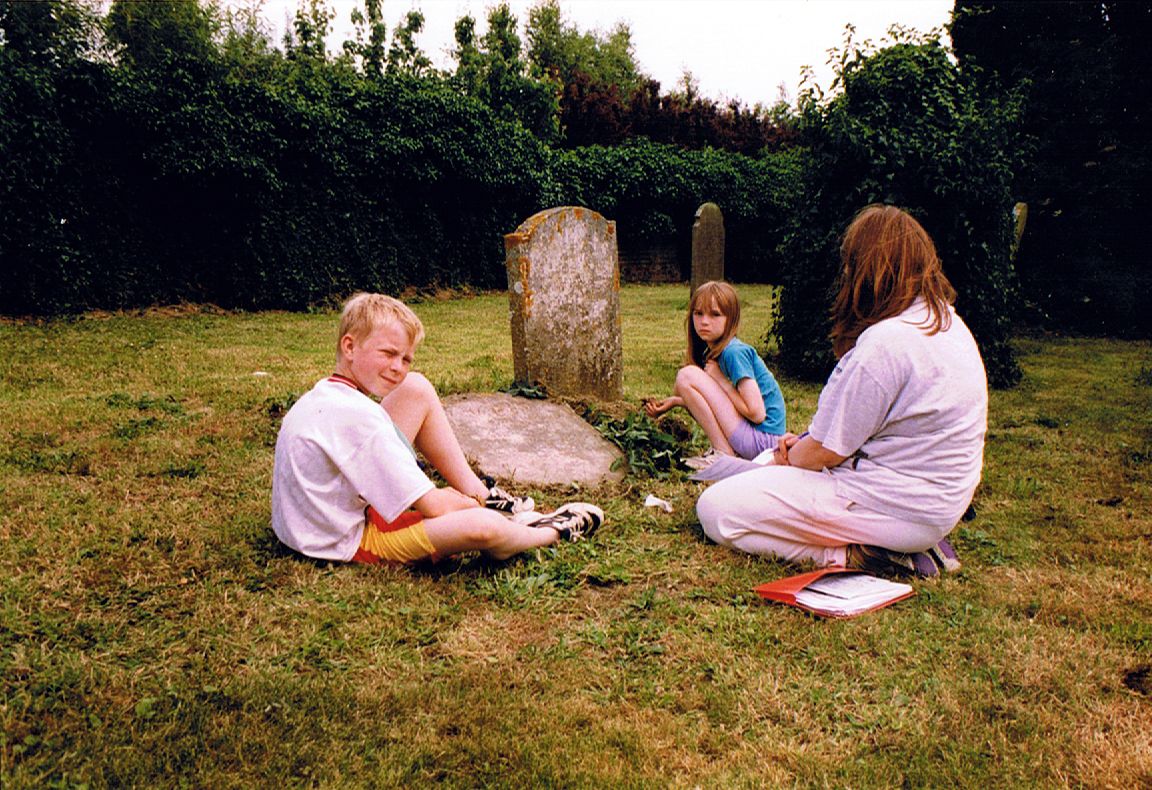Anne (U.K.) offers this wonderful story to supplement yesterday’s list of ways to slip almost painlessly into family history progress: “Having read the post and pondering how it is possible to make family history less scary and more appealing, I thought of ideas we had tried as a family. The article is missing one trick – family history days out during holidays, visiting areas where your ancestors once lived. We gained so much appreciation for our ancestors by seeing the areas in which they lived and learning more about the lives of the people who lived contemporaneously.”
When our children were small, my (now) ex husband and I used to plan our summer holidays and short camping trips, very carefully, so as to be sited near places of genealogical interest. Our poor children got used to spending part of each holiday in local history libraries, or in cemeteries, and, in smallish doses, were fairly compliant, providing a treat was promised for ‘afterwards.’
 One summer we camped in the south of England, actually in a field attached to a farm which used to belong to my great x 3 grandfather Horne. After a Sunday morning spent roaming round the tiny village, we took off for a drive to the seaside, promising the offspring a long paddle, but neglecting to inform them that we would be stopping at a cemetery or two en route. I had a goal, to find the gravestones of my 5th great grandparents, Elizabeth Jezzard nee Lovewold (died 1816) and her husband George Jezzard (died 1821). On a boiling hot Summer afternoon, we parked by the side of a tiny church in a quiet village called Chislet and surveyed the graveyard. The oldest part beside the Church was (relatively) small and I started trying to identify where the best area to search might be. We split up, and agreed to meet back after a few minutes to compare notes (the offspring would have been 8 and 10 at this time).
One summer we camped in the south of England, actually in a field attached to a farm which used to belong to my great x 3 grandfather Horne. After a Sunday morning spent roaming round the tiny village, we took off for a drive to the seaside, promising the offspring a long paddle, but neglecting to inform them that we would be stopping at a cemetery or two en route. I had a goal, to find the gravestones of my 5th great grandparents, Elizabeth Jezzard nee Lovewold (died 1816) and her husband George Jezzard (died 1821). On a boiling hot Summer afternoon, we parked by the side of a tiny church in a quiet village called Chislet and surveyed the graveyard. The oldest part beside the Church was (relatively) small and I started trying to identify where the best area to search might be. We split up, and agreed to meet back after a few minutes to compare notes (the offspring would have been 8 and 10 at this time).
At the appointed time we reconvened, sweltering, by the side of the church walls, and I sat upon a convenient gravestone which had fallen over, whilst husband sat upon the upstanding companion gravestone, and we held a conference. Feedback was disappointing; most of the stones were illegible, and those which could be read were covered in a mossy lichen. We had two options, we decided; give up (the children’s eyes lit up) or scrape every gravestone in the cemetery to try to find the names for which we were searching. Even my enthusiasm waned at this idea, but I then tried to be supportive by asking if we could maybe clean one stone and see how long it would take.
The kids were dispatched to the nether regions to find some scraping implements (I know this is a no-no, but time was of the essence here, and they are my ancestors after all!) and my daughter produced some old, dry pine cones. Handing his watch to my son, my husband said ‘right, time me!’ and started off at a furious pace rubbing the face of the stone upon which I had been sitting.
Slowly we watched as the first name ‘ELIZA..’ became visible. ‘Five minutes!’ shouted my son, and my husband stopped. ‘This will take too long, we had best forget it ‘ I said; ‘but out of interest, you might as well finish this one. Try the surname so someone else can benefit.’ And we stood watching as slowly ‘Jeza’ became visible.
We looked at each other, and we all grabbed a pine cone, each furiously scraping different parts of the gravestone. Before our eyes, the words
In memory of Elizabeth Jezard who died Feb 17 1816 aged 76 years
(illegible first two lines, then)
till God did please to grant me ease
And free me from all pain
were revealed to us.
I (ever the practical one, not) promptly burst into tears. Whilst I was weeping in a mixture of disbelief, gratitude and reunion, the kids and my husband then started upon the gravestone on which they had been sitting, next to Elizabeth’s. The inscription read:
In memory of George Jezard
who died 18 May 1821 aged 86 years
 So there we had them. My 5th x great grandparents, and we had been sitting upon their very gravestones.
So there we had them. My 5th x great grandparents, and we had been sitting upon their very gravestones.
It took a while before I could leave that quiet Church graveyard in the almost deserted village. Only the promise that we would stop at the Churchyard in which I believed George’s father was buried could get me out of there. The original experimental pine cone was placed on top of Elizabeth’s gravestone, in lieu of flowers, but somehow more appropriate. And off we went for a paddle, and then a trip to another country Churchyard where, unbelievably, another miracle awaited us.
Continue reading at the original source →



